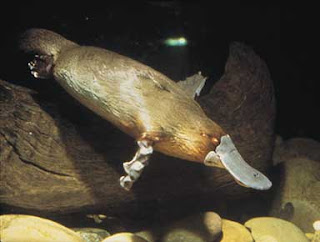Because the Australian Aboriginal culture is the oldest continuous culture in the world, it is possible that the Australian Aboriginal people may be the world's first astronomers.
One of the earliest records of indigenous astronomy was made by William Stanbridge, an Englishman who emigrated to Australia in 1841 and befriended the local Boorong people.
Some Aboriginal groups use the motions of celestial bodies for calendar purposes. Many attribute religious or mythological meanings to celestial bodies and phenomena. There is a diversity of astronomical traditions in Australia, each with its own particular expression of cosmology. However, there appear to be common themes and systems between the groups.
Duane Hamacher, a PhD candidate at Macquarie University in Sydney, found a bowl-shaped crater at Palm Valley, near Hermannsburg, about 130 km southwest of Alice Springs, by searching for it on Google Earth - after being tipped off by Aboriginal dreaming stories.
"Indigenous Australians tell lots of stories about stars falling out of the sky with a noise like thunder - and one of the stories gave a location in the Northern Territory," the astronomer told the Northern Territory News.
"I searched for it on Google Earth, but when I really found something looking like a crater I couldn't believe it.
"I was very hesitant with excitement as I thought I would look like an idiot if it was just something simple - but it wasn't.
It was a crater."
When visiting the site with a team of geophysicists and astrophysicists, Mr Hamacher and his team found evidence of Palm Valley being an ancient meteorite crater.
"We found shocked quartz, which is only produced by a substantial impact and its presence in the rock samples and the morphology of the structure are the major indicators that Palm Valley is a crater."
Mr Hamacher said the discovery of a connection between dreamtime stories and reality was an exciting one.
"Lots of Aboriginal dreamtime stories are associated with craters, meteorites and cosmic impacts and although some craters are millions of years old and people would not have been able to witness the impact, it seems as if traditional dreaming stories know about the crater's origin."
One of the stories - the one that local Arrernte people tell about a star that fell into a waterhole called Puka in the valley, where Kulaia, the serpent, lived - had led to the discovery of the ancient crater, which the team proposed to name Puka, but there were "many, many more", Mr Hamacher said.
"We found stories with descriptions of cosmic impacts and meteorite falls related to places in Arnhem Land - we assume there are more meteorite craters out there and science doesn't even know about their existence yet."
Artist: Gabriella Possum Nungurrayi
Milky Way Dreaming tells the mythological story of seven sisters, the stars of the constellation Taurus (Pleiades), being chased across the sky by a Jakamarra man
represented by the morning star in Orion’s Belt. He tries to catch them but the seven sisters continually elude him.
Stars and family relationships
Knowledge of the constellations or star formations also reflect the patterns for social relationships in some areas. Arrernte and Luritja 'skin groupings', which determine people's relationships to one another, are based on the constellations of the Southern Cross. The stars represent a man and a woman ideally suited in marriage, with their parents, children and other relations all marked out in the night sky.
For Warlpiri people, the ancestors broke the Milky Way (called Yiwarra) into individual stars that we see today. Some fragments fell to earth, creating sacred places. This story is re-told in paintings, song and dance as well as re-enacted in contemporary initiation ceremonies, where men wear white down on their bodies to represent the stars (Dianne Johnson, Macquarie Atlas of Indigenous Australia).
Thus, connections are made on a daily basis between ancestors, people, stars and land. The telling of the Dreaming stories reinforces knowledge about the constellations, social behaviour, land formations and sacred places.















































